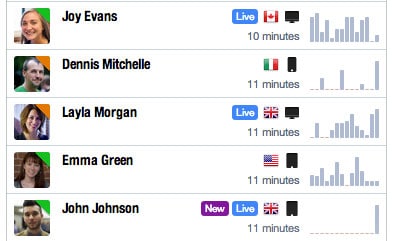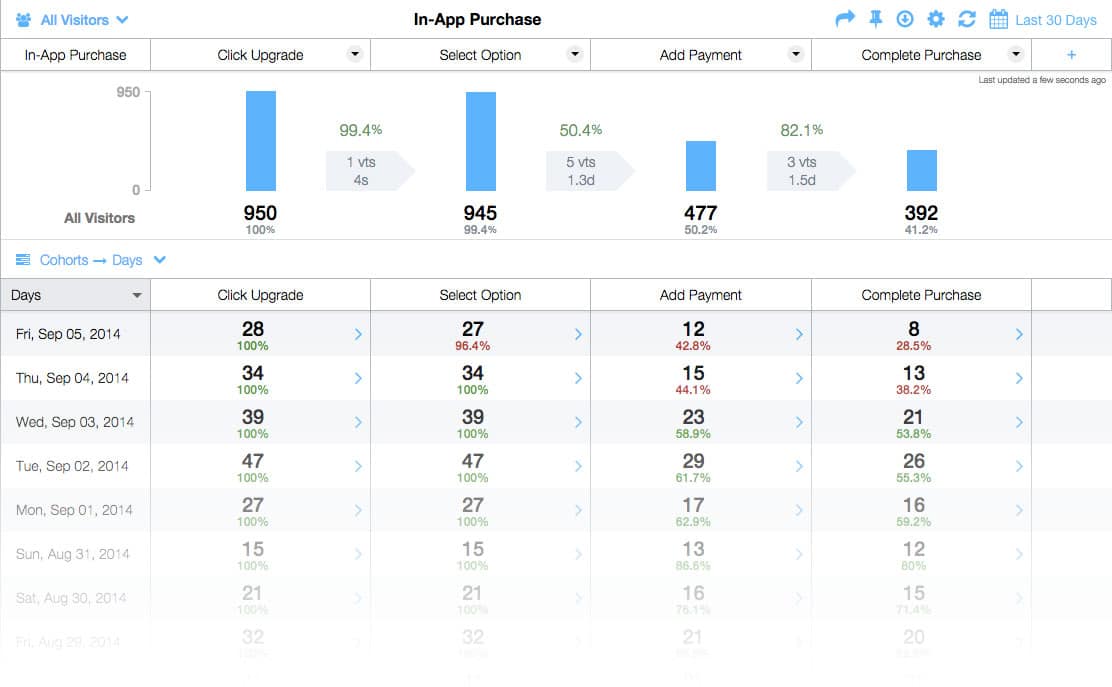There is a huge difference between being present on WeChat and actively leveraging the platform. How can you make sure you are maximising your WeChat ROI?
1. Link your WeChat account with a web-APP
WeChat provides you with basic information about reads and shares for your messages (along with geographic, demographic and device data), but this data resides on Tencent servers, not on yours: you can only see as much as WeChat lets you see.
In order to measure your WeChat ROI very precisely, you will have to acquire a more fine-grain view about what your followers are doing: you have to take them to your own servers.
Creating a WeChat web-APP will be a way to do just that: you will create a mobile website accessible via WeChat. The web-APP will provide additional services and enhanced design to your users, while also giving you access to a large breadth of data.
2. Track individual WeChat users
WeChat gives you a great advantage over many other platforms: you can track users as long as they access your website via WeChat, and get more than statistics: you can gather data about your individual users.
When users start following your account, you will automatically have access to their basic WeChat profile (nickname, profile picture, gender, city, language) and will be able to link this data with their personal browsing behavior.
This means that rather than getting general information about your users behavior, you will be able to engage in targeted marketing later down the road. Knowing data about specific users will also give you much more freedom to find possible correlations between your user profiles and their behavior.
3. Segment your WeChat content
The only way you can make sense of the behavior of your users is by having clearly segmented content. By splitting your content into various type of categories, you can understand which type of content is most interesting to your users (or to specific users, or to user categories).
4. Segment your WeChat followers
The same rule applies to your followers: seeing your followers as an aggregated mass will not enable you to figure out clear patterns in their behavior.
You will need to split your users into specific groups: age, geography and gender are an easy way to start, but you can go much farther: did they already buy your product? Participate to your events? Through which channels did they start following you? How long have they been your followers? How often are they re-sharing your content?
5. Define conversion funnels to maximize WeChat ROI
Once you have set-up the above tracking and segmentation, it is time to move to the final part of your WeChat ROI follow-up: conversion funnels.
Conversion funnels are not just about determining how many users buy your products. The principle of conversion funnels is simple: you want to know, among the users who took action A, how many took action B.
For instance: how many people who took part to your latest marketing campaign ended up reading the new post you sent this week? How many of your users who signed up for events ended up buying your product?
Funnels are the key to defining WeChat ROI as they link upstream marketing actions (campaigns, ads, etc…) with downstream benefits (shares, reads, sign-ups, sales, and generally engagement). By setting-up clear funnels, you will be able to understand more than what is happening: you will know why it happens, and you will be able to both measure ROI and optimise your future steps.



